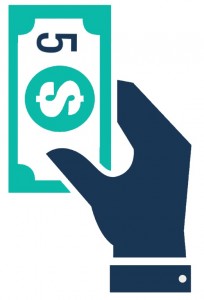 Long-term Engagement
Long-term Engagement
The aim of Learning and Development is to roll out training that knocks socks off and secures long-term learner engagement. But what it often achieves is a fleeting interest in the learning process that dissipates all too quickly, leaving a bunch of disinterested, disengaged and demotivated zombie learners in its wake.
When we talk about engagement, we’re thinking about desire and behaviour. Do learners want to learn? Are learners making the effort to learn? Are they enjoying the process and doing well? Another way of looking at this is to consider motivation: are your learners motivated to learn or are they dragging their heels?
Different Kinds of Motivation
Generally speaking, there are two types of human motivation: intrinsic and extrinsic.
Extrinsic motivation involves doing something for its external rewards, like money, praise or something else tangible. For extrinsically-motivated people, it is not the action or behaviour itself which they like, but the outcome. In the learning sphere, this means that learners may not enjoy learning new things, yet they are motivated to continue doing so because of the promise of a payrise at the end of the process.
 Intrinsic motivation, on the other hand, drives behaviours that result in internal rewards, like enjoyment, positive feelings and happiness. It’s a drive to complete an action – in our case, learning – because of the effect it has on us internally. Therefore when people are intrinsically motivated, they have a genuine desire for the activity itself and enjoy it tremendously.
Intrinsic motivation, on the other hand, drives behaviours that result in internal rewards, like enjoyment, positive feelings and happiness. It’s a drive to complete an action – in our case, learning – because of the effect it has on us internally. Therefore when people are intrinsically motivated, they have a genuine desire for the activity itself and enjoy it tremendously.
When it comes to learning, it’s pretty clear that we’re all aiming to get our learners intrinsically motivated. Yet – you may see where this is going – we tend to extrinsically reward our learners (with remuneration, badges, kudos and promotions), which has been found to have a negative impact on intrinsic motivation.
 In an experiment to test motivation, psychologist Edward Deci monitored two groups of students playing a game called Soma. One group was paid for each puzzle they solved, while the other group played for no monetary reward. What Deci found is that Group A participants stopped completing the puzzles as soon as the experiment ended and there was no more money to be had. Group B, on the other hand, kept solving the puzzles even after the experiment was over. This is because they found the puzzles intrinsically interesting – the other group may have also thought this, but the extrinsic reward reduced their intrinsic motivation to continue.
In an experiment to test motivation, psychologist Edward Deci monitored two groups of students playing a game called Soma. One group was paid for each puzzle they solved, while the other group played for no monetary reward. What Deci found is that Group A participants stopped completing the puzzles as soon as the experiment ended and there was no more money to be had. Group B, on the other hand, kept solving the puzzles even after the experiment was over. This is because they found the puzzles intrinsically interesting – the other group may have also thought this, but the extrinsic reward reduced their intrinsic motivation to continue.
Parts of this article were previously published on eLearning Industry. Click here to read that article!





